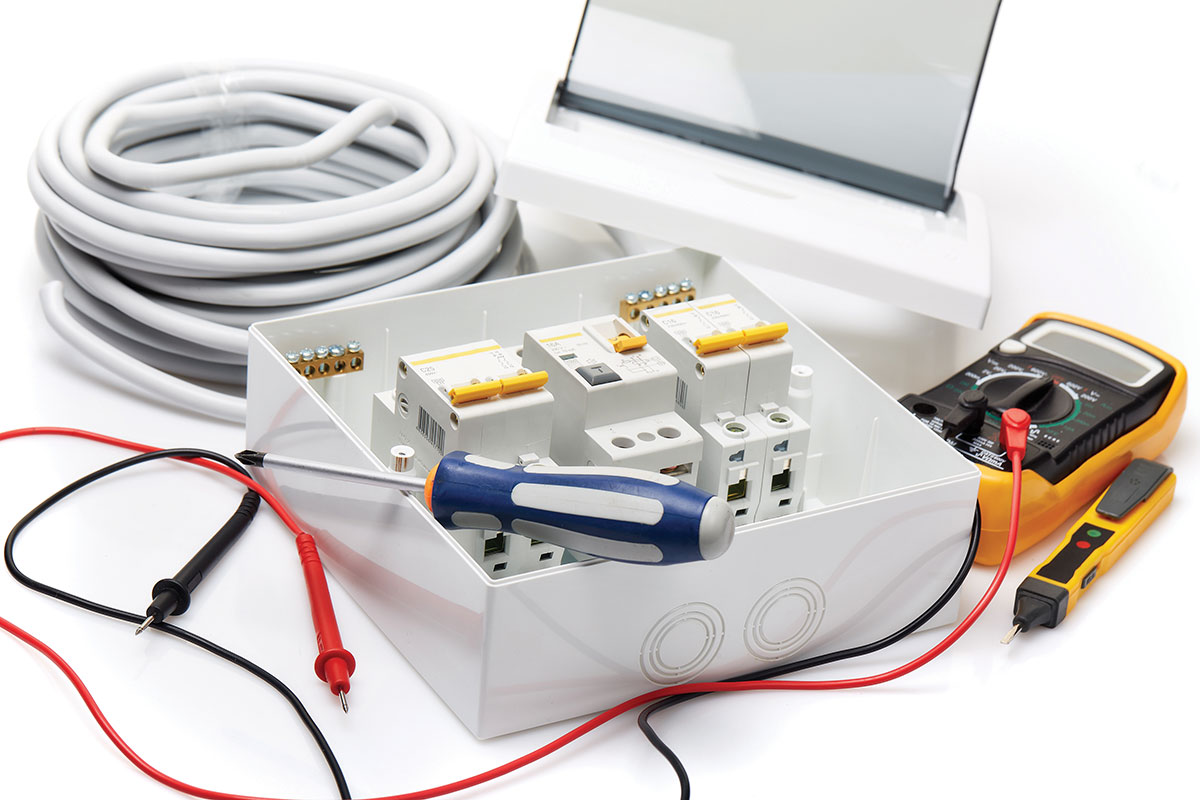One of the major changes in the National Electrical Code’s (NEC) 2017 edition was the safety requirement additions made to Section 210.8(B), Ground-Fault Circuit Interrupter (GFCI) Protection for Personnel in Other than Dwelling Units. Where previous editions of this code only stipulated GFCI protection for single-phase, 15-ampere, and 20-ampere receptacle circuits, the NEC extended its requirements for receptacle circuits of 150 V to ground or less, up to 50 A for single-phase loads and up to 100 A for three-phase loads.
The main reason for this change was that shock hazards are not limited to single-phase 15-ampere and 20-ampere circuits, and larger single-phase and three-phase loads also present a significant hazard to personnel. Commercial kitchens and vehicle service centers were mainly impacted by this code change due to their equipment’s power requirements.
Before states began to adopt the 2017 NEC edition, there were not any commercially available GFCIs for protecting larger three-phase loads. This led to some unsafe workarounds by designers and installers.
One unfortunate workaround was the use of ground-fault protection of equipment (GFPE) in lieu of GFCIs. For example, a ground-fault relay with an output connected to a trip coil on a circuit breaker may be sensitive enough to detect leakage currents as low as 6 mA. However, since their trip durations are not standardized to meet specific time requirements, the overall shock energy is likely to exceed personnel protection requirements. This is especially true when considering the added mechanical opening time of the circuit breaker the relay is tripping. In addition, this type of system will not incorporate any self-test diagnosis, which is critical to ensure proper performance for the protection of human life.
GFPE circuit breakers and relays are not tested and certified to UL’s stringent requirements for products that prevent electrocution. Therefore, the NEC does not consider them GFCI devices. The NEC only considers devices that have a UL 943 listing to be GFCIs (for personnel-level protection).
Another adverse workaround was to remove the receptacle from the design completely and use flexible cable to hardwire the portable equipment to a disconnect or junction box, which evaded the code language. However, doing so intensified the prevalence of leakage currents. Flexible cables are prone to wear and tear, and when the loads get larger, so do the cables. Larger cables are less flexible, and the portable equipment they supply are larger and heavier too.
Imagine a commercial kitchen with a heavy portable fryer or a combination oven that is connected to a junction box (or a disconnect switch) by a flexible cable assembly. Every time that equipment is moved for cleaning or maintenance, the cable can flex, stretch or become damaged in ways it was not intended to endure. When cable insulation breaks down, leakage currents can flow, and shock hazards will present themselves. Using a plug and receptacle with equipment that can be moved helps limit the cords’ wear. Tethering portable equipment to the wall by “hardwiring” is not in the spirit of the code requirement.
What about loads that are permanently connected–like a dishwasher? The chances of conductors breaking down over time are far less likely, but they do not fully eliminate opportunities for shock hazards, especially when you consider the environment that type of equipment is installed in. The 2020 edition of the NEC identified several appliances that require special attention when it comes to GFCI protection, with the dishwasher being one of them. NEC 422.5 and the newly included section 210.8(D) in the new 2023 NEC both detail this subject. Certain appliances, like dishwashers, must be GFCI protected regardless of whether they are receptacle connected or permanently installed, so long as they are 60 A or less.
Fortunately, these dangerous workarounds are no longer necessary. The NEC’s new requirements led to innovations in new GFCI technology, and manufacturers have since developed GFCIs capable of protecting higher ampere receptacle circuits.
GFCIs continue to prove themselves as a powerful engineering control that helps decrease electrocutions in the workplace and at home. For these devices to be effective, we must ensure that people only install GFCIs that are UL Listed when appropriate and that they follow proper installation practices and NEC requirements.















Find Us on Socials